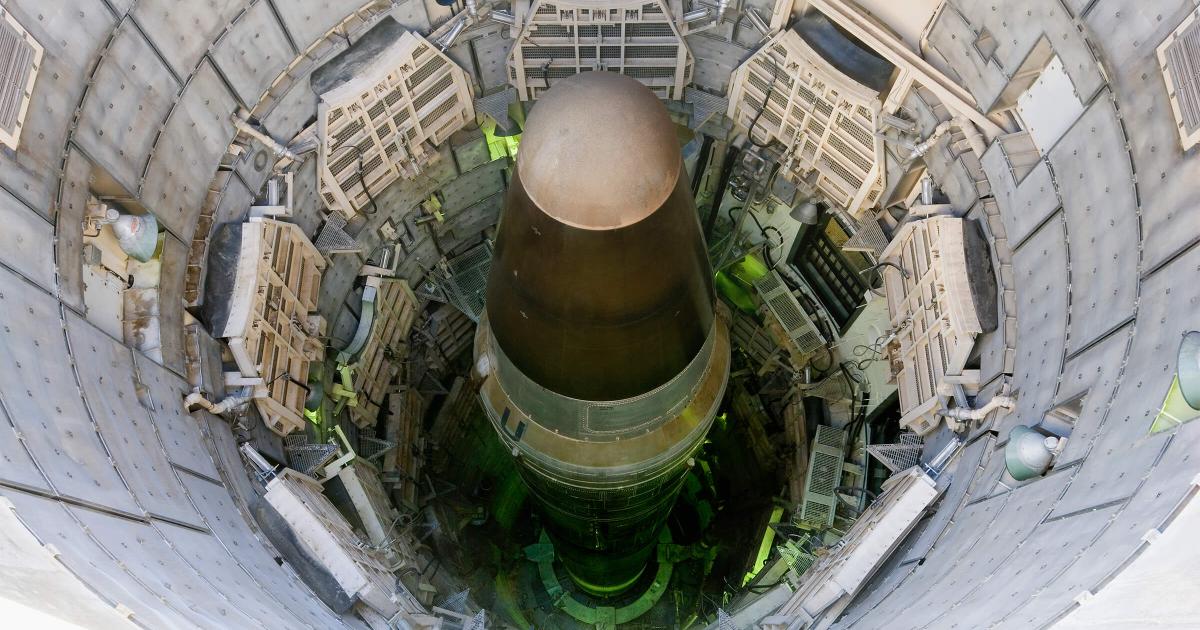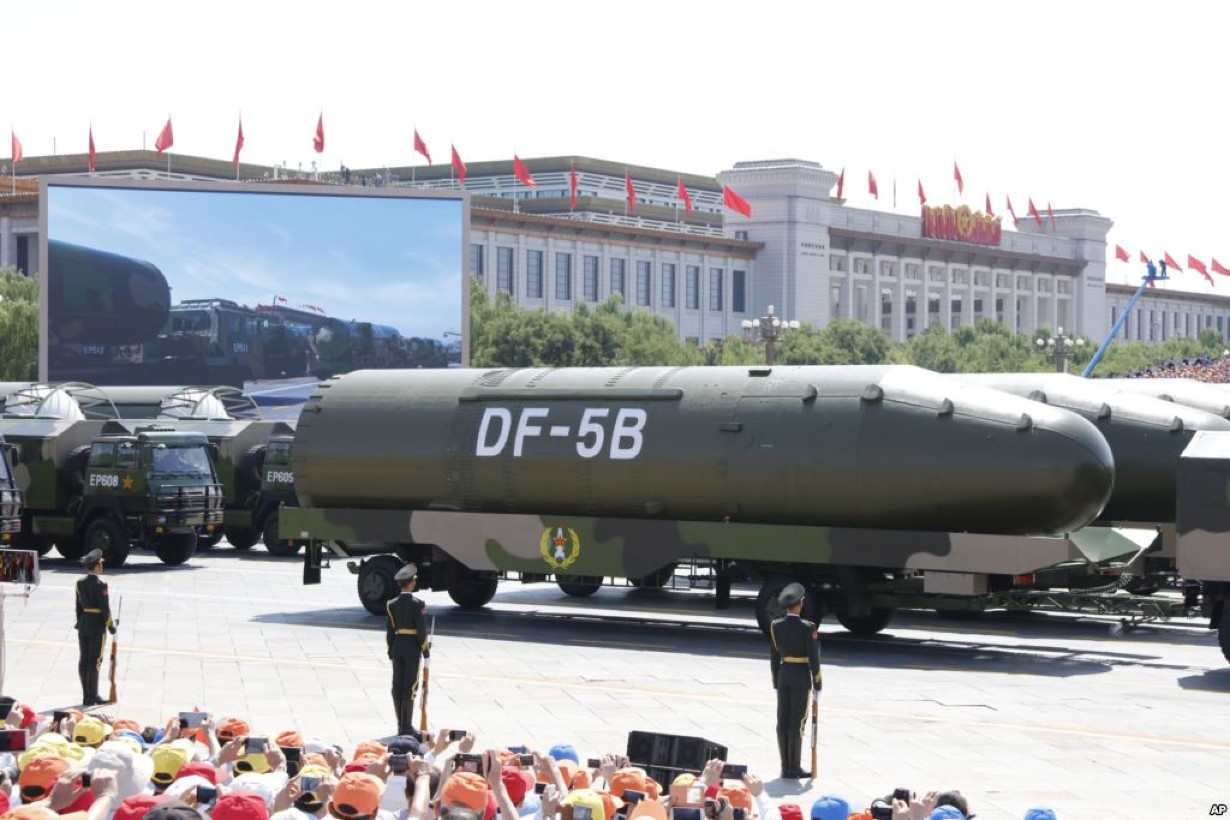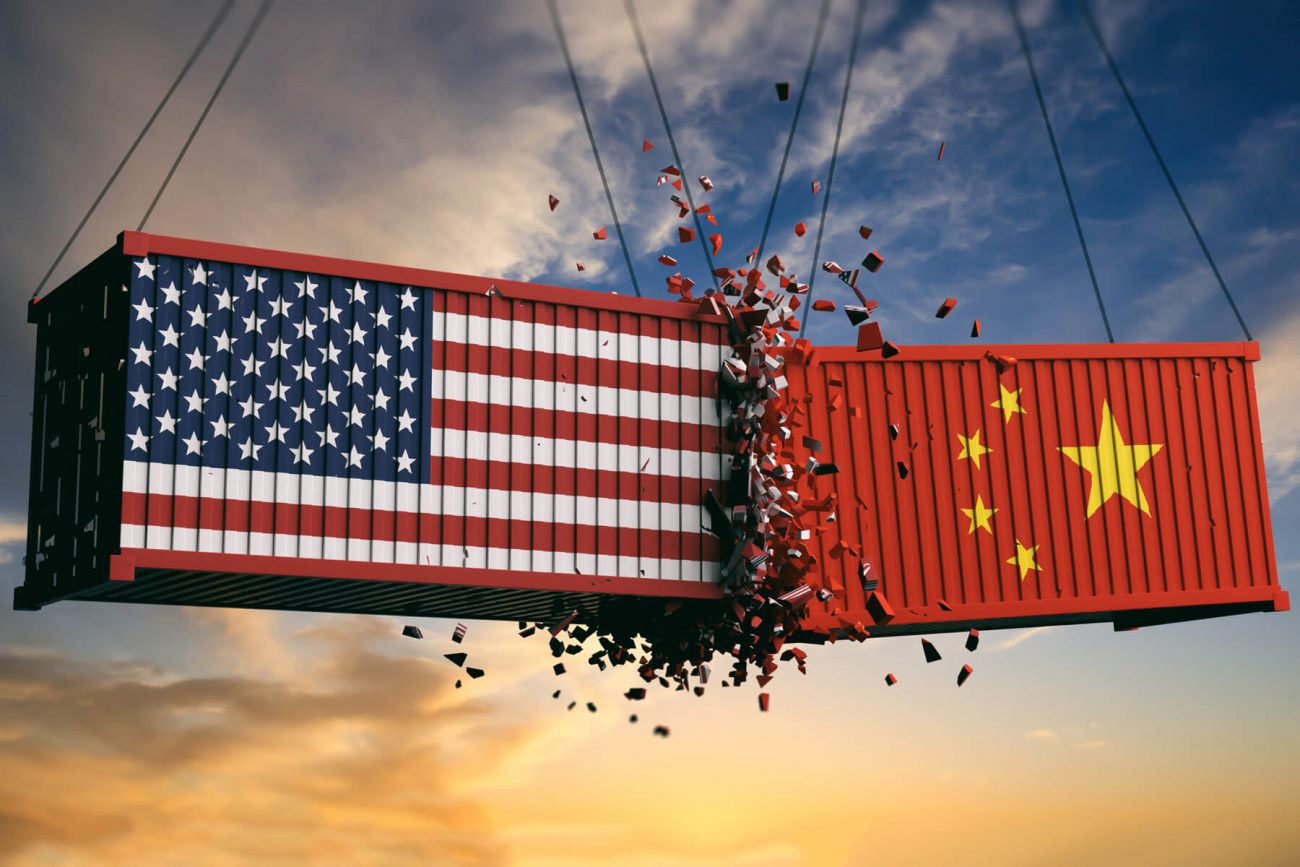The US and China both look like they might use nuclear weapons first if actions and statements from their leaders are anything to go by.
While China paraded Intercontinental Ballistic Missiles (ICBM) days before the Taiwan crisis, US Strategic Command chief Admiral Charles Richards says they are “furiously” rewriting their nuclear deterrence theory before an “unprecedented” dual Russia, China threat.
The South China Morning Post (SCMP) reported that days before China kicked off live-fire military drills around Taiwan before US House Speaker Nancy Pelosi’s visit, clips on Chinese social media showed two vehicles carrying the two-stage liquid-fuelled Dongfeng DF-5B ICBM.
Videos also showed other nuclear-capable missiles like the DF-27, DF-16, and DF-15B moving through city streets. The DF-5B has a range of 15,000 kilometers, capable of reaching North America.

While the article quoted retired PLA Colonel Yue Gang saying, “it was aimed at warning the US and Japan as (Beijing’s) most powerful weapon that could give (them) a deadly strike,” another Chinese expert maintained that China would never use nuclear weapons first.
Zhou Chenming from the Beijing Yuan Wang Military Science and Technology think tank said China would not change its long-standing no-first-use nuclear policy.
The military exercises, the missiles on the streets, and the ones fired in the live-fire drills were conventional weapons aimed at Taiwan’s “pro-independence camp…and preventing the Taipei government from turning the Taiwan problem into an international issue,” Chenming added.
Chinese leadership considers Taiwan its red line, like Russia does Ukraine, and both perceive the United States as trying to breach it.
Jittery United States
Meanwhile, the United States seems to have read the situation differently and is reconsidering its nuclear posture to ‘deter’ Russia and China from launching nuclear strikes.
A first-of-its-kind “three party threat (before) two peer nuclear capable opponents at the same time” has motivated the Strategic Forces Command (STRATCOM) to “furiously rewrite its deterrence theory,” according to its chief, Admiral Charles Richard. Richard made the statement on the sidelines of the Space and Missile Symposium on August 11.
Richard cited China’s imminent “strategic breakout” in modernizing its nuclear and conventional forces, ICBMs, road-mobile ICBMs, Submarine Launched Ballistic Missiles (SLBM), and 200 new ICBM silos, and un-trackable hypersonic missiles that enhance overall delivery capability.
This, Richard adds, disproves that China does not intend to launch nuclear strikes first, often explained by its small nuclear stockpile compared to the US. China is reported to have between 300 to 400 warheads, compared to the 3,750 held by the United States as of September 2021.

Will A New Posture Deter Or Provoke?
While it is unclear what nuclear posture or nuclear deterrence strategy the US might adopt, some informed guesses can be made. Hypersonic missiles, difficult to detect and track, mean target countries would have no primary means of knowing that they are on their way.
Ballistic missiles, on the contrary, at least have a chance of being able to be detected while being readied in their silos or moving on their road-mobile launchers via space-based satellites. They follow a ballistic trajectory, leaving the earth’s atmosphere, where they become even easier to detect, giving the target country enough time to release their own missiles. This is a Launch on Warning (LOW) posture.
It is a different matter that it is impossible to identify the type of missile being launched, whether nuclear or conventional and is prone to massive miscalculations. Moreover, a posture confirming nuclear detonation before launching a retaliatory strike also entails massive civilian or military damage.
This leaves ‘launch on pre-emption’ – or simply a pre-emptive nuclear strike on enemy nuclear forces before they are launched – as the only presumable posture. For one, a pre-emptive nuclear first strike may not necessarily destroy all enemy nuclear weapons, according to John Steinbruner, director of the Center for International and Security Studies at Maryland.
Secondly, a pre-emptive strike posture might encourage an adversary to launch first rather than deter, afraid that the US first strike might render his nuclear arsenal useless. This ‘pre-empting the pre-emption’ turns the idea of deterrence on its head.
Having this posture during a crisis is even more dangerous. The tension and deep mistrust between the two nations might cause the ‘pre-emptive striker’ to misunderstand any ground movement as a preparation to launch those undetectable hypersonic missiles.
But the “furious rewriting” might not be the academic exercise of having a new nuclear deterrence policy/strategy, it has been suggested. It could rather be American technological efforts to be able to track hypersonic missiles, some experts indicate.
“(Hypersonic missiles) may be harder to track for now, but the United States is working on filling the gap by developing a new sensor network to detect and track hypersonic missiles,” Tong Zhao, a non-proliferation and arms control expert and Senior Fellow at Carnegie Endowment, told Eurasian Times.
Zhao explains this by maintaining that Russian or Chinese hypersonic missiles do not fundamentally change US’s nuclear threat perception as they are not necessarily faster than existing ballistic missiles.
Besides, the US has already been maintaining a “capability to launch nuclear weapons as soon as the enemy nuclear launch is detected and confirmed.”
So primarily, Zhao indicates, it is the perceived potential collaboration between Russian and Chinese militaries, including their nuclear forces, which American nuclear capabilities may be insufficient to deal with simultaneously, that is driving Washington’s concerns.
“This was not a problem when the Chinese arsenal was very small. But the three-body nuclear dynamics becomes much more complex when China is quickly becoming a nuclear near-peer of the United States and Russia,” Zhao added.

Arms Control Pacts The Best Way Forward
Neither is it fair to blame Russia or China for building up their forces since the US withdrawal from the 1972 Anti-Ballistic Missile Treaty in 2002 triggered an arms race, accelerating Moscow’s hypersonic missile programs.
The ABM Treaty was signed between the United States and the Soviet Union at the height of the Cold War.
While addressing the other political issues that negatively affect the relationship with these nations would be ideal, arms control pacts with mutually agreed forward deployed first-strike platforms and limiting the number of warheads may be a good beginning.
But from the American perspective, it is the Chinese reluctance to enter nuclear/arms control talks that incentivizes it to rely on “unilateral measures” to address its “nuclear threats,” according to Zhao. The Chinese unwillingness itself is driven by its perception of a US hostility “determined to undermine and contain it (China),” which a larger arsenal helps counter.
The Chinese nuclear build-up might be meant for deterrence and politico-strategic leverage and not for warfighting. This can be surmised from Zhao characterizing the Chinese as wanting to just “have the larger arsenal, not to trade it away” (in arms control pacts).
The $13 billion Ground Based Strategic Deterrent (GBSD) program, meant to replace the aging Minuteman-III ICBMs, despite experts pointing out the survivability of its 70% deployed nuclear force on stealth strategic bombers and nuclear submarines (SSBNs), might itself be driving Chinese or Russian consternation.
Russia said in March that it would use its nuclear weapons only if there were an “existential threat” to the country. China already has a no-first-use nuclear policy. Perhaps the President Joe Biden administration can start by clarifying that nuclear weapons are not for warfighting purposes and only for the existential defense of the country.
On January 3 this year, the five biggest nuclear weapons states – the United States, France, United Kingdom, Russia, and China – signed a joint statement denouncing the use of nuclear weapons and recognizing that a “nuclear war cannot be won and should not be fought.” They also added that nuclear weapons should serve defensive purposes, deter aggression, and prevent war.
Sharon Weiner, an Associate Professor at the School of International Service at American University, during a webinar hosted by the Quincy Institute on February 28 about tactical nuclear weapons, had this advice for the Biden administration: “The Biden administration needs to clarify whether nuclear weapons are to be used for existential defense or warfighting.
A sharp line needs to be drawn. Otherwise, we risk uncontrolled nuclear escalation. Warfighting can be undertaken by the US’ vastly capable and superior military capability.”
- The author can be reached at satamp@gmail.com
- Follow EurAsian Times on Google News




